Your face is a stiff and shallow fighter!
Did the cheaper price of the game influence the review?
|
|
See PixlBit's Review Policies

On 07/22/2010 at 06:45 PM by Nick DiMola A stiff and shallow fighter that seems to lack purpose and direction. |

As time has gone on, the fighting genre has seen many unique titles that all represent the core gameplay in a different way. Though many different forms of the genre have existed, only a few of these have proved successful amongst gamers. Tournament of Legends takes a swing at creating a new form once again that meshes concepts found in a couple different fighters, mainly Namco's Soul Calibur and Nintendo's Punch-Out!!. Unfortunately, the fighter from High Voltage Software is largely unenjoyable thanks to some rigid controls and very basic gameplay.
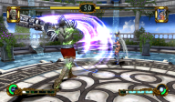
Like most fighters, Tournament of Legends is thin in its available modes. Players can play through the Story Mode, which tells the story and intent of each fighter who are all trying to claim the throne of Thanatos, the god of death, now that Jupiter has gone missing. The mode is nothing more than fight after fight until players battle Thanatos, who is not much different than the other fights in the mode.
The other modes of the game are basically the same. A Practice mode is present to learn the very few unique moves each fighter has and the Versus mode allows up-to-two players square-off against each other or a computer. Versus mode, like story mode, gives players a base choice of fighters, with two characters left to unlock. Though there are a number of different fighters, each and every fighter feels mostly the same in action with some slightly varying special moves specific to the character, weaponset (which are interchangeable), and special moveset (also interchangeable).
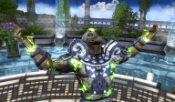
In-game fighting is a pseudo-2D/3D hybrid, where players can move in 3D space, but are basically bound to a single side of the screen. Moving in 3D space to avoid attacks is basically impossible, so most of the time, the ability to move in 3D space is of little worth. What's worse is that each character, aside from a single, mostly worthless ranged attack, has an unchanging attack range for each of their moves. This range is represented on the ground with a half-moon shape to make it easy to determine exactly how far an attack will go.
Though the attack range is represented well, the game is extremely frustrating to control because it feels so stiff. Most of the time, getting within range and jamming on the attack buttons will suffice for a win over time. The only seemingly necessary skill is blocking, which is almost 100% effective if players are holding the button when an enemy attacks. Typically, holding off on a special move until shortly after blocking an enemy's attack is enough strategy versus the computer to ensure a win.
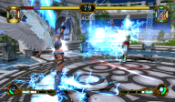
Furthermore, because the attack range is the same for each move, and each character attacks mostly the same, the game turns into what's basically a slightly more advanced version of Rock'em Sock'em Robots. With the basic moveset and strong similarites across all characters, the roster, though small to begin with, feels even smaller and less varied, providing for an extremely uncompelling experience.
Part of the enjoyment of any fighter is learning the strengths and weaknesses of the characters in the game so that you may develop a strategy, and master a moveset for the highest probability of success. It seems like High Voltage tried to replicate some of what makes Super Smash Bros. so popular with standardized controls, but in the end wound up with something entirely too homogenous.
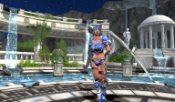
The general structure of the matches drags down the experience further. The match is consistent of three acts, with a short break between each act to regenerate both health and armor by spinning the left and right analog sticks on the Classic Controller. During the match, players fight until they knock down their opponent, which stops the clock and prompts another quick mini-game where players taunt the fallen enemy for a health boost. In order to win, players must knock down their enemy three times within the three acts.
In many ways, this set-up is similar to Nintendo's Punch-Out!!, but in execution feels very out of place in the likes of a Soul Calibur-like fighting game. The mini-games mentioned are quite annoying, especially when the computer player is so much better at them, causing them to regain the majority of both their health and armor in between acts while players can barely regenerate a single of the two.
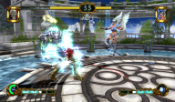
Each level in the game also features a hazard that is engaged randomly throughout the match. Players must perform a quick time event to avoid the hazard or else they will be injured. This further waters down the experience, making the game feel more like a poor fighting mini-game than some sort of full-fledged title.
Tournament of Legends doesn't seem to have a clear focus. It attempts to emulate a number of other fighters all at once, while including some hokey extras that do nothing to improve the experience. Worse off, the game seems to have no truly deep strategy and the roster is both generic and unvaried. The game is not fluid enough to have true combos, aside from those that are born from rapid single button presses and the overall control is extremely stiff. It's sad to say, but Tournament of Legends barely checks a single box for the characteristics of a competent fighter.
The cheaper price really plays no part. It's a bad game no matter how much it costs.
When I first saw this game at last year's E3 it was a poor Punch-Out!! clone. Now, instead of cloning one game poorly it has mashed up a number of games poorly, producing something that's completely unenjoyable. There are most definitely better Wii fighters out there, and if nothing else, Soul Calibur 2 for the Cube.
Comments